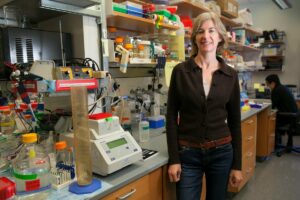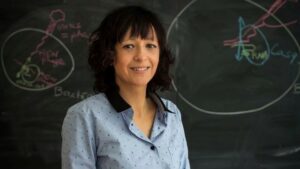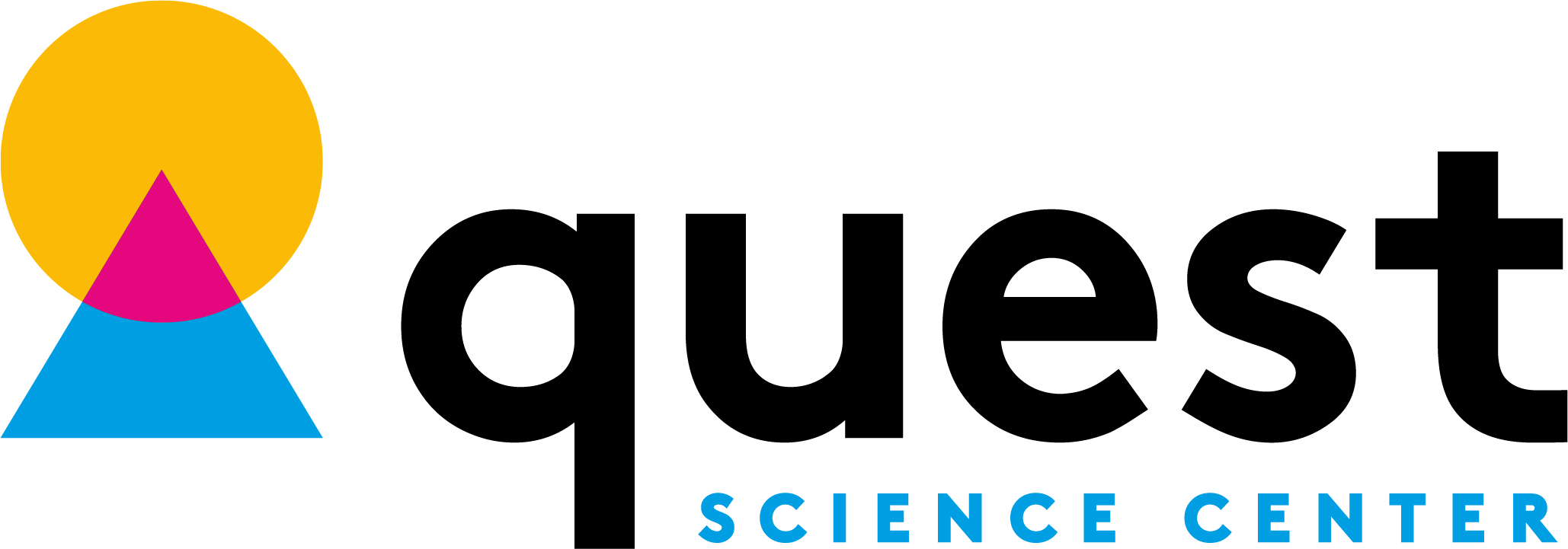Women in Science
 The 2020 Nobel Prize
The 2020 Nobel Prize
By Gina Bonanno and Lee Younker
We take a look at the Nobel prize-winning work from four women in the areas of chemistry and physics, and the local connection to Lawrence Livermore National Laboratory. We’ve included links to articles so you can further explore the work and careers of these remarkable scientists.
The Nobel Prize is the legacy of Alfred Nobel, a Swedish chemist, engineer, and inventor of, among other things, the blasting cap, dynamite and smokeless gun powder. In 1901, Nobel specified in his will that a portion of his considerable assets should be distributed annually to “…those who, during the previous year shall have conferred the greatest benefit on mankind.” A very simple statement defining a most profound accomplishment.
Since then, 337 prizes have been awarded to 624 laureates in the fields of physics, chemistry, and physiology or medicine. Following Nobel’s lofty standards and expectations these prizes are widely regarded as the most prestigious awards in each of these fields. Every year in early October, the scientific world turns its attention to Sweden for three mornings in a row as the announcements are made – who won, where are they from, what did do, and why were they chosen.
2020 Marks a Shift in Demographics
In many respects, 2020 was no different than years past. Awards were given to high-impact, outstanding science done by distinguished researchers at prestigious institutions. The first day of awards was shaping up to look like it has since 1901, with the prize for physiology/medicine was being awarded to three white men for their discovery of the hepatitis C virus.
The next two days, however, were entirely different. The physics prize went to Roger Penrose, Reinhard Genzel and Andrea Ghez. Ghez became only the fourth woman out of 216 Laureates to win a Nobel Prize in Physics. The next morning, Emmanuelle Charpentier and Jennifer Doudna became the first two female scientists to jointly win the chemistry prize without a male collaborator, and only the sixth and seventh women to win in this category out of 186 previous laureates. Their work clearly met the standards of Alfred Nobel.
The story of these women, their work, and the path they took to Nobel prize-winning science is a fascinating one. It tells us much about the nature of science, the interplay between science and technology, the many paths to award-winning scientific discoveries, the challenges faced by these women in rising to the top of their fields, and the daunting reality that scientific discoveries can lead to enormous societal benefit while at the same time posing thorny ethical issues.
The 2020 Nobel Prize in Chemistry Honors a Scientific Revolution—CRISPR, the Science of Gene Editing


The Nobel Prize in chemistry went to the two researchers, Emmanuelle Charpentier and Jennifer Doudna, for a gene-editing tool that has revolutionized science by providing a way to alter DNA, the code of life. Scientists can now use the CRISPR technology to focus on a specific region of the genome and snip it in two. The cell senses the problem and moves to heal the wound by stitching the pieces together using a similar stretch of DNA nearby. Understanding this process gives researchers the opportunity to insert their own tailor-made template to achieve a specific objective such as correcting a disease or defect causing mutation.
Dr. Francis Collins, leader of the program to map the human genome, commented that the technology has changed everything about how to approach the study of diseases with genetic causes. More than 100 clinical trials are underway to study using the technology to treat diseases such as sickle cell, HIV infection and inherited forms of blindness. Others have noted that the potential benefits of CRISPR go beyond treating diseases to all aspects of biology including raising better crops and livestock. Walter Isaacson, a well-known science history author has recently published a brief article that describes the extent of the revolution made possible by this technology. In this article he notes, “…with CRISPR, two scientists turned a curiosity of nature into an invention that will transform the human race.”
Drs. Charpentier and Doudna worked in separate but related fields, both investigating aspects of the underlying science and then collaborating to put the pieces together into the revolutionary technology. Dr. Charpentier, a microbiologist, noted a puzzling series of repeating DNA segments while studying species of bacteria that causes scarlet fever. Subsequent work by others showed that the repeating segments were bits of genetic material derived from viruses that had tried to attack the bacteria.
Dr. Charpentier and her team figured out key steps in how the bacteria are able to attack the virus. At this point, Dr. Charpentier realized that she needed to go outside her field to make further progress, so she sought out a collaboration with Dr. Doudna, an expert on how bacteria make RNA molecules for a variety of purposes.
Charpentier and Doudna became the first two female scientists to jointly win the chemistry prize without a male collaborator, and only the sixth and seventh women to win in this category out of 186 previous laureates.
Dr. Charpentier and Dr. Doudna began their collaboration in 2011, after they met at a scientific conference. They published the Nobel Prize-winning paper in 2012, a feat that is remarkable in its own right. They were awarded the Nobel Prize only eight years later, unusually fast for a process that usually takes decades between the defining work and the award. During that eight-year period the technology became commonplace in laboratories around the world.
Early on, Dr. Charpentier and Dr. Doudna recognized the potential for misuse of the technology they created. It is, of course, not uncommon for a powerful new technology to offer widespread benefits while at the same time generating significant risks through misapplication. The primary concern in this case is that CRISPR could be used to make “designer babies” by altering eggs, embryos, or sperm. A recent article outlines some of the issues and concerns being discussed and debated in the scientific community.
Curious to read more about the Nobel Prize? Click here for details on Dr. Doudna’s and Dr. Charpentier’s accomplishment
Video clips of Dr. Doudna’s first day after learning she’d won the Nobel Prize, her Nobel press conference, and comments from colleagues can be found in this UC Berkeley article
Read more about the 57 women who have won Nobel Prizes over the years and their inspiring stories in this Newsweek article
Join CRISPR’s co-discoverer Jennifer Doudna, as she explores the perils and the promise of CRISPR-Cas9, a DNA editing tool.
It is not the first time that human ingenuity has created something capable of doing us great good and great harm. Are we up to the challenge of guiding how CRISPR will shape the future?
What is CRISPR and What Does it Mean for Humanity?
The 2020 Nobel Prize in Physics for Observing the Center of our Galaxy

The 2020 Nobel Prize in physics was awarded to astronomer Andrea Ghez, a professor and researcher at UCLA, for discovering a “…supermassive compact object at the center of our galaxy.” In other words, she discovered a black hole at the center of the Milky Way!
Andrea Ghez, the fourth woman to win a Nobel Prize in Physics, discovered the black hole at the center of the Milky Way.
As far back as 1971 scientists suspected that a black hole could be at the center of our galaxy. For several decades Ghez had pursued conclusive measurements in an experiment many thought was impossible, as described in this article written by a colleague. Ghez’s observations were made at infrared wavelengths on the Keck telescope located on Mauna Kea in Hawaii. With this telescope she was able to peer into the center of the Milky Way galaxy. She made precise measurements of the orbits of many stars circling an invisible object at the galactic center and determined that the source of this gravitational pull must be due to the presence of a supermassive object. Recent measurements have concluded that the object is undoubtedly a black hole (named Sagittarius A*), estimated to have a mass equivalent of 4 million suns.
In the 1990’s Ghez worked closely with a team at Lawrence Livermore National Laboratories to prove her theory. LLNL had developed a laser-based adaptive optics system which enabled the images coming from large ground-based telescopes to be corrected and to provide much clearer pictures of faraway objects. Left uncorrected, images are distorted by the deleterious effects of the atmosphere–this is what makes stars appear to twinkle and makes telescope images blurry. Ghez understood how revolutionary this could be for her research and the astronomy field in general, and when the technology was deployed at the Keck Observatory she and her colleagues obtained the first clear image of the center of the Milky Way galaxy.
The past few years have seen a number of incredible breakthroughs in the field of astronomy and cosmology using black holes. In 2018, gravitational waves from colliding black holes were detected using the Laser Interferometer Gravitational Observatory (LIGO), and last year we saw the first image of a black hole horizon by the Event Horizon Telescope.
Ghez shared the prize with Reinhard Genzel of the Max Planck Institute who independently made the discovery. Unlike Charpentier and Doudna, Ghez and Genzel were collegial but ran competitive teams working separately on the same problem for several decades. The other half of the prize was awarded to theoretical physicist, Roger Penrose of Oxford University, who in 1965 was the first to theorize the existence of black holes and how they relate to Einstein’s Theory of General Relativity.
Ghez is also the co-author of a children’s book “You Can Be a Woman Astronomer”.
Speaking about physics, she said “It’s a field that has so many pleasures, and if you’re passionate about the science, there is so much that can be done”
Click here to view more on the announcement of Dr. Ghez’s Nobel Prize.
The 2018 Nobel Prize in Physics for a Breaking a Barrier in Laser Technology

In 1985, Donna Strickland was a twenty-six-year-old graduate student when she conducted the work that earned her the Nobel Prize in physics in 2018. She was the third woman to win the prize, following Marie Curie in 1903 and Maria Goeppert-Mayer in 1963. She shared the award with Gerard Mourou who had been her Ph.D. thesis advisor at The University of Rochester.
Strickland wanted to study laser-matter interactions for her doctoral work but at the time, the achievable laser intensity level (power in watts per unit area in square centimeters, W/cm2) had reached a limit due to damage limits and non-linear optical effects in the laser materials.
Strickland needed a more intense laser source and other researchers knew that if the material limits could be overcome many new phenomena and applications could be observed and developed. She and Mourou invented the chirped pulse amplification (CPA) technique which uses dispersive elements such as prisms or gratings to lengthen the laser pulse before amplification which can then be amplified without damaging the amplifying medium. After amplification, the first step is reversed which recompresses the pulse. This technique produces an ultra-intense laser without damage to the amplifying medium.
After receiving her doctorate, Dr. Strickland spent two years at Lawrence Livermore National Laboratory as a staff scientist, where she conducted research in the Inertial Confinement Fusion Program before moving on to Princeton. In 1996, using Dr. Strickland’s CPA technology, LLNL demonstrated the first petawatt laser, a laser whose power was 1015 watts. From the time of Strickland’s 1985 demonstration to the 1996 petawatt demonstration laser power increased by nine orders of magnitude, a good fraction of which resulted from the invention of the CPA.
Though she is no longer at LLNL her chirped pulse amplification technology can be found in several current systems at the labs and many more around the world. Strickland’s work launched the field of ultra-high intensity lasers—which have found application in a wide variety of fields from basic science investigations of laser-matter interactions to micro-machining to particle accelerators for medical uses, and to its most common commercial use—a tool for eye correction surgery.
In 2018, Donna Strickland became the third woman to earn the Nobel Prize in physics, for her work with laser amplification.
When the topic of gender came up in an interview, Strickland said, “I know there is certainly a lot of effort right now being placed on equity, diversity and inclusivity…but I don’t see myself as a woman in science. I see myself as a scientist. I didn’t think that would be the big story. I thought the big story would be the science.”
Click here to view Dr. Strickland’s Nobel lecture.
The Emerging Presence of Women at the Top of their Fields and Continuing Challenges
As promising as the recent trends suggest, there is still a long way to go toward diversity in science. As of 2020 no African American, male or female, has ever won a Nobel Prize for medicine, chemistry or physics. According to a 2019 interview with Göran Hansson, secretary-general of the Royal Swedish Academy of Sciences, the committee has acknowledged this disparity and says that the organization has begun to address this “Nobel imbalance” by implementing changes in its nomination process.
An important precursor to increasing the representation of women and minorities in the Nobel ranks is increasing the numbers entering the fields. A recent report from the National Science Foundation, entitled “The State of U.S. Science and Engineering 2020” provides the most recent data on the S&E workforce. It concludes that, although the number of women and minorities in STEM continues to grow, these groups continue to be under-represented in STEM fields and in the workforce overall. Hopefully as the pipeline becomes more diverse and efforts to ensure broader consideration of their work are introduced the effects will be seen in the Nobel prize winners.
For women there continue to be challenges related to their traditional role in the family and in providing childcare. It’s been shown that the pandemic has disproportionately affected the productivity of female researchers in academia. A recent article describes increased stress and a reduction in the rate at which women are publishing relative to male researchers.
Young women with an aptitude and desire to pursue a career in a STEM field will undoubtedly be inspired by these recent women Nobel laureates. In October, another woman was given a prestigious award—fourteen-year-old Anika Chebrolu, who won the 3M Young Scientist Challenge. Her entry was for a study in which she identified a molecule that can selectively bind to the SARS-CoV-2 virus. Her work was described as having real promise in the fight to control and cure this disease. Anika said “I just wanted to help the world and let children know that they can do whatever they want to accomplish”.

Stanford Doctor Fatima Rodriguez Studies Connection Between COVID-19 and Cardiovascular Disease
Dr. Fatima Rodriguez, MD, MPH, has been an assistant professor in cardiovascular medicine at the Stanford University Medical Center since 2014. In addition to being a practicing general and preventive cardiologist, she researches a range of issues relating to racial and ethnic disparities in guideline adherence, cardiovascular disease prevention, health promotion, and leveraging technology to improve the care of diverse patients.
She’s also Research Director for an innovative telemedicine program in cardiology, CardioClick, and is a volunteer working on the new American Heart Association (AHA) patient data registry to learn more about the COVID-19 virus and its associations with cardiovascular disease.
In a May Cardiovascular Business interview, Dr. Rodriguez notes that “COVID-19 is the health crisis of our lifetime and has impacted almost every aspect of cardiovascular care for patients and physicians. Because of the lack of high-quality data across diverse populations, physicians are often making management decisions with uncertainty.”
As such, the AHA has recognized the pressing need to rapidly collect, analyze, and disseminate high-quality data about the cardiovascular effects of COVID-19. Early research suggests that the SARS-COV2 virus may affect every aspect of the cardiovascular system – the coronary arteries, the myocardium, and the electrical system.
The goal of this registry is to capture high-quality and comprehensive data across U.S. hospitals for patients hospitalized with COVID-19. “We are collecting detailed demographic data, serial laboratory and testing data, treatments, and cardiovascular outcomes in patients,” said Rodriguez. “We need to work together to make sure the data we collect are truly representative of the diversity of the U.S. patient population”.
